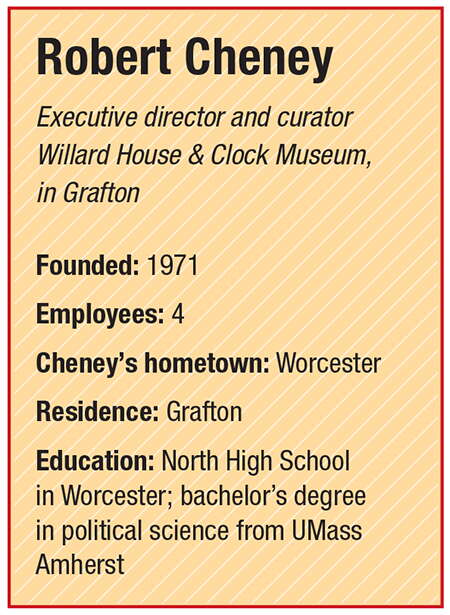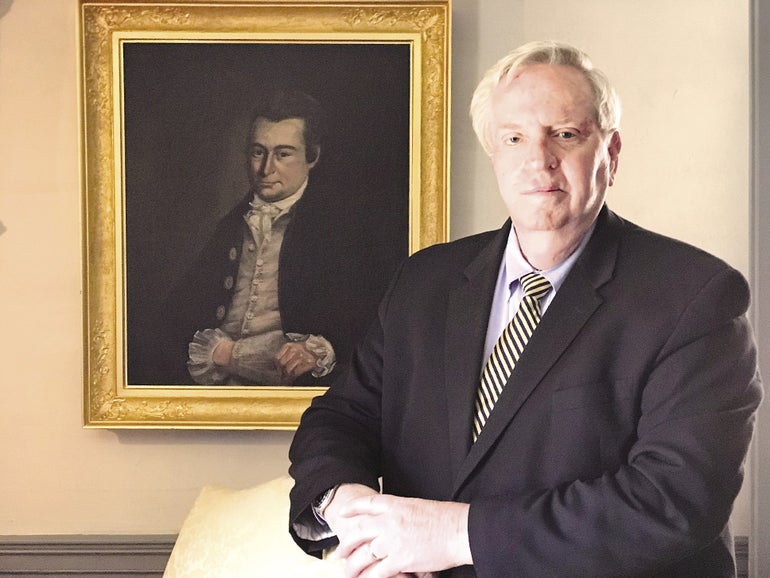
Q&A: From the Antiques Roadshow to the Willard House & Clock Museum
 Photo | Courtesy of Willard House & clock museum
Robert Cheney, executive director and curator of the Willard House & Clock Museum
Photo | Courtesy of Willard House & clock museum
Robert Cheney, executive director and curator of the Willard House & Clock Museum
The study of time is an important science people today don’t appreciate, said Robert Cheney, executive director of Grafton’s Willard House & Clock Museum. He has spent a lifetime researching, advising, selling, and consulting in the field of horology. He, along with Willard's trustees and staff, would like to change people’s appreciation for the field. With plans to grow the 18th-century-built museum nestled in the meadows buffering the historic workshop of the famous Willard Family – America’s preeminent 19th-century clock makers – Cheney is eager to share his love of the history, art, and business of clockmaking with a new generation.

Cheney’s fascinating career in horology started in Worcester, where he was raised as a third-generation clockmaker. The son of a Worcester clockmaker, his career has taken him all over the country as a lecturer and consultant, and even made him a regular expert on the popular “Antiques Roadshow” series. He makes his home in Grafton, where he’s able to easily commute to the job he took after he retired temporarily. At 72, he’s not sure when he’ll ever leave. With about 3,000 visitors annually, Willard is ramping up for a growth phase Cheney hopes will bring the red antique New England house to new heights, with more space for learning and more treasures to share with patrons.
Why come out of retirement to lead Willard House & Clock Museum?
I retired from Skinner Auction House in Marlborough seven years ago, and I didn’t have much of a break. When that change came about, I’d been on the board of the Willard House & Clock Museum for years. I got a call they’d be making a change in director and asked if I’d do it. I told them I’d do it for a few months, but then took the job five years ago, full time.
I’m well-known in the field, and if I retired to play golf in Florida, everybody knows my phone number. They'd still be calling me and asking me questions. The only difference is I wouldn’t be getting paid for it.
You learned horology young from your father. Were you an eager pupil?
I started at age seven and was fascinated by it. As an older child, I was more interested in being outside playing baseball than inside working on a clock on a Saturday. My father said, “You’re going to learn this whether you want to or not,” which I kind of resented. But he said if I learned, I would come to see it as a good thing whether I ended up working the field full-time, part-time, or as a hobby. That was a good old-fashioned Yankee talking there.
Why did you stick with it?
Horology can be whatever you want it to be. On one end of the spectrum, people open a neighborhood clock repair shop. It’s not unusual to charge $50 to $75 an hour. The highest-level horologists might work for NASA. Maybe they’re an astrophysicist but what they’re working on are things relating to horology. Or you can have a profession like I have. I started at age seven and by the age of 35, I was tired of working on the bench and became more of a consultant.
You feel strongly young people should know more about horology as a career path. Why?
If you study it as I have done, there is really is not an invention that would have been possible without a timekeeper behind it. Whether it's a computer on your desk or even a key fob that opens your car door, anything like that is based on horology. Modern GPS is a time story.
I’m working on a curriculum to teach horology. Once you know something about it, then you can choose what direction to take. A lot of training can come for free. For example, you could train in Switzerland to repair Patek Philippe watches and plan on a $100,000 to $150,000 salary to start, and you don’t need a four-year degree.
How do you entice students?
The kind of students we’re looking for are younger people who are in the development stage at the moment. We’re hoping to get something started for fourth and fifth graders. That’s when you can light the spark. I was fascinated by the clocks, and I couldn’t wait to see another taken apart and learn how to work on it. This is Legos in a whole different field.
The museum is set to grow programming as well as space and exhibits. What does the future look like for Willard House & Clock Museum?
We have a five-year plan. We expect within five years or so we will have a major gift come our way totaling $15 to $18 million. It’s clocks and artifacts related to the Willard Family, and the other half is cash, donated by a member of our board of trustees named Charles Grichar. He’s asked us to raise money to grow our endowment from $2 million to $5 million, and once we’ve done that, the donation will move forward. We’re planning to kick off our capital campaign this spring and hold openings in different places depending on our audience. My guess is we will be getting support in places you’d never expect.
This interview was conducted and edited for length and clarity by WBJ Correspondent Emily Micucci.









0 Comments